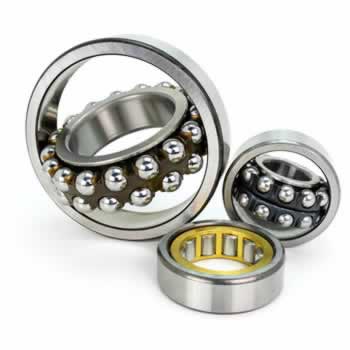Bearings
Bearings play a crucial role in countless machines, vehicles, and mechanical systems, enabling smooth and efficient motion. From the wheels of a car to the turbines in a power plant, bearings are the unsung heroes that reduce friction, support loads, and ensure precision. In this comprehensive product description, we will delve into the world of bearings, their types, materials, applications, and the unparalleled value they bring to various industries.
What are Bearings?
At its core, a bearing is a device that supports a load while enabling relative motion between two moving parts. It facilitates the transfer of forces and moments between these parts, reducing friction and wear. Bearings come in various shapes and sizes, designed to meet specific requirements in diverse applications.
Types of Bearings
- Ball Bearings: Among the most common types, ball bearings use steel balls to separate the moving parts. They offer low friction, high efficiency, and suitability for various radial and thrust loads. Deep groove ball bearings, angular contact ball bearings, and thrust ball bearings are some popular subtypes.
- Roller Bearings: These bearings use cylindrical, tapered, or spherical rollers instead of balls, providing enhanced load-carrying capacity and better shock resistance. Examples include cylindrical roller bearings, tapered roller bearings, and spherical roller bearings.
- Needle Bearings: Needle bearings feature cylindrical rollers with a high length-to-diameter ratio. They excel in applications with limited radial space, such as automotive transmissions and aerospace systems.
- Plain Bearings: Also known as bushings, these bearings are simple in design and do not contain rolling elements. They use a sliding motion to reduce friction and are commonly found in hinges, linkages, and pivots.
- Thrust Bearings: Designed to handle axial loads, thrust bearings are essential in applications requiring support for heavy axial forces, such as propellers and screw jacks.
- Mounted Bearings: These bearings come pre-assembled in housings, simplifying installation and providing a convenient solution for specific applications.
Bearing Materials
The choice of bearing material significantly impacts performance, durability, and application suitability. Some common bearing materials include:
- Steel Bearings: Steel bearings are widely used due to their excellent strength, wear resistance, and ability to handle high temperatures. They are suitable for various industrial applications, automotive components, and heavy machinery.
- Ceramic Bearings: Ceramic bearings are known for their exceptional hardness, corrosion resistance, and high-speed capabilities. They find applications in specialized industries, including aerospace, high-performance sports equipment, and medical devices.
- Plastic Bearings: Ideal for applications requiring chemical resistance and low friction, plastic bearings are often used in food processing machinery, medical equipment, and marine environments.
- Hybrid Bearings: Combining the best features of steel and ceramic bearings, hybrid bearings offer reduced weight, improved performance, and extended service life. They are commonly used in high-speed electric motors and advanced industrial applications.
Bearing Lubrication
Proper lubrication is critical for bearing longevity and performance. Lubricants reduce friction, prevent wear, dissipate heat, and protect against corrosion. Common types of lubricants include:
- Grease: Grease is a semi-solid lubricant consisting of a base oil and a thickener. It stays in place, providing continuous lubrication and sealing out contaminants.
- Oil: Bearing oils come in various viscosities, suitable for different operating conditions. They offer excellent heat dissipation and are commonly used in high-speed applications.
- Solid Lubricants: Some bearings use solid lubricants, such as graphite or PTFE, which provide long-lasting lubrication without the need for continuous reapplication.
Bearing Applications
- Automotive Industry: Bearings are crucial components in engines, transmissions, wheels, and various other automotive systems.
- Aerospace Industry: Aerospace applications demand high-performance bearings that can withstand extreme conditions and deliver reliability in critical components like landing gears and aircraft engines.
- Industrial Machinery: Bearings are found in conveyor systems, electric motors, pumps, and other machinery used in manufacturing and processing industries.
- Power Generation: Bearings play a vital role in turbines, generators, and other power plant equipment, ensuring smooth and efficient energy production.
- Medical Equipment: Precision bearings are utilized in medical devices, such as surgical tools, MRI machines, and dental equipment.
- Wind Energy: Large wind turbines rely on robust bearings to harness wind energy effectively.
Maintenance and Installation
To maximize bearing life and performance, proper installation and maintenance are essential. This section will cover best practices for bearing installation, alignment, and inspection.
Conclusion
In conclusion, bearings are indispensable components that drive the wheels of progress in various industries. Their ability to reduce friction, support heavy loads, and enable precise motion makes them fundamental to modern machinery and technology. Whether in a high-performance sports car or a massive wind turbine, bearings quietly play their part in enhancing efficiency and reliability.










